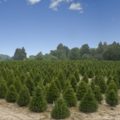
You probably know that plants cause a lot of your seasonal allergy woes, but do you know which ones are the worst offenders? Here are some of the most common seasonal allergy triggers, according to a recent article from the Huffington Post:
Olive trees: Olive trees typically release large amounts of pollen in the late spring to early summer, causing acute symptoms in many allergy sufferers.
Ash trees: You can probably blame at least some of your seasonal allergy symptoms on ash trees, currently pollinating in much of the country.
Oak trees: The National Allergy Bureau Pollen and Mold Report indicates that current oak pollen counts are high in the U.S.
Timothy grass: According to Merck pharmaceuticals, Timothy grass is one of the most common grasses in the United States. Merck recently released Grastek, an under-the-tongue allergy medication that uses Timothy grass extract to treat symptoms. (Talk to your doctor if you are interested in taking Grastek. You must take the first dose under medical supervision.)
Sweet vernal grass: Data from the United States Department of Agriculture shows that sweet vernal grass is present in most regions of the country, including the Northeast, Southeast and Northwest. It's typically in pollination from April through June.
Ragweed: The American College of Allergy, Asthma & Immunology reports that ragweed can grow almost anywhere, but it's especially prevalent in the eastern and Midwestern regions. It pollinates from August through November.
If you suffer from seasonal allergies, you might want to make an appointment with your doctor to discuss possible prescription treatments. Allergy control products, such as a warm mist humidifier, allergen air purifier and allergy bedding can also also help you manage sensitivities during the upcoming season. Visit the Allergy Be Gone website to find out more!









